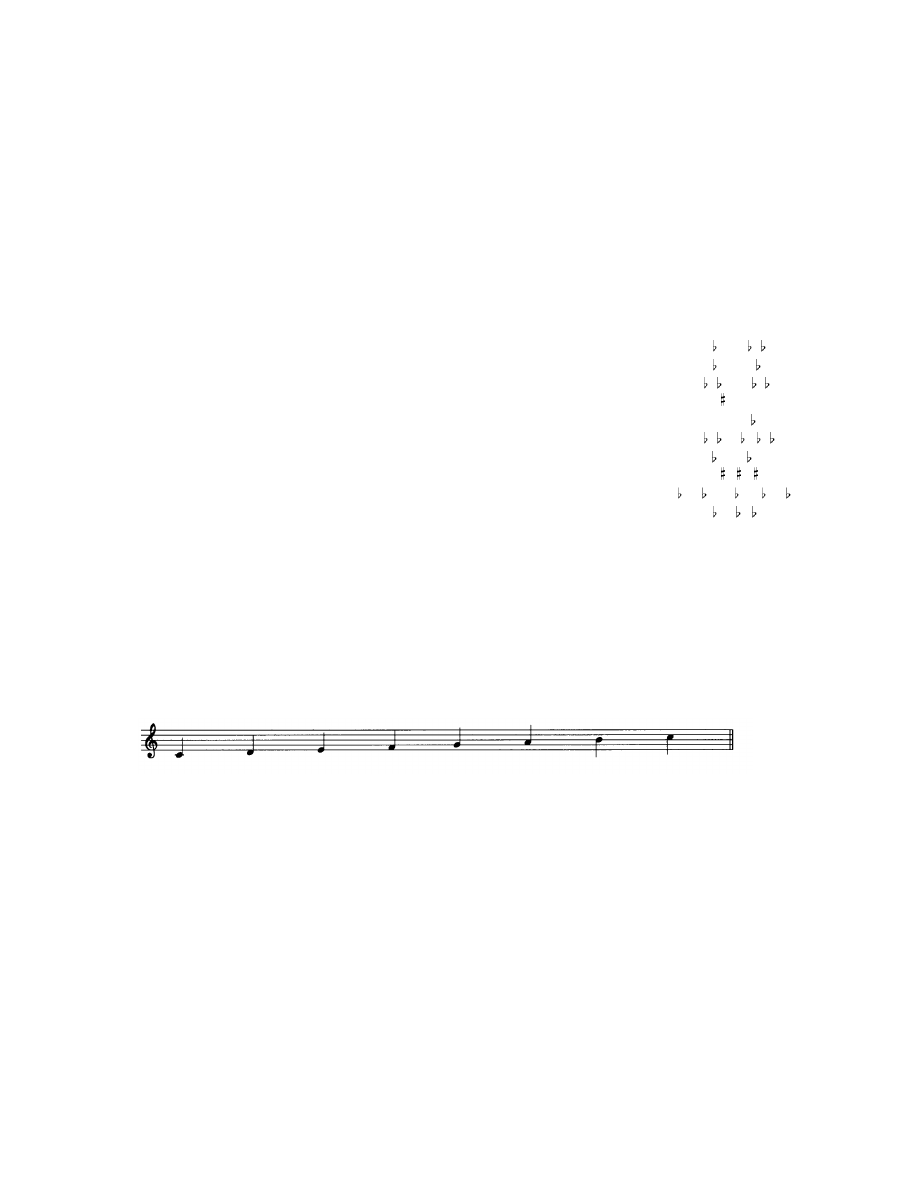ВУЗ: Казахская Национальная Академия Искусств им. Т. Жургенова
Категория: Учебное пособие
Дисциплина: Не указана
Добавлен: 03.02.2019
Просмотров: 12336
Скачиваний: 6

R
RT-60 meter: A hardware device for measuring the acoustical characteristics of a listen-
ing/recording space. Gated pink noise is played and analyzed by the meter. The meter then
provides a read-out of the locations reverb profiles for the different frequencies, usually
125Hz, 250Hz, 500Hz, 1kHz, 2kHz, and 4kHz.
RTA: Real-Time Analyzer. A piece of hardware that measures the loudness of an audio signal,
either through a flat-response microphone or a line input, and categorizes the loudness into
different frequency bands, used to flatten out the frequency response of a monitoring system.
An RTA usually displays frequencies at one third-octave or octave bands. The decibel level of
each frequency band is displayed graphically.
RTSP: Reat-Time Streaming Protocol. An internet protocol for real-time transmission of high-
fidelity audio, suitable for live concert feeds as well as professional audio applications. See
RealAudio.
rubato: A musical term indicating that a conductor or musician may take expressive liberties
with the tempo during the designated section of a score.
rumble: A low-frequency mechanical vibration in a turntable, microphone, or tape transport.
Rumble is specified as a S/N ratio in decibels, with -50dB being common.
rumble track: Stereo white noise lowpass filtered at about 40Hz so as to be felt and not heard.
run: A command used by DOS to launch an application program. The RUN command may
be used with various switches (subcommands) and is uniquely powerful and straightforward.
This is no doubt owing to the sacred–cow status of the command conferred by its origin in the
numerous progenitors of DOS, decades before anyone from Microsoft could confuse it.
running master: The same as a print master.
running status: A data compression scheme for MIDI data whereby status bytes can be skipped
if they would be the same as the most recent status byte. For example, a four-note chord can
be transmitted using only nine bytes rather than the usual twelve. See also MIDI delay(2).
rushes: See dailies.
rustle: See Foley.

S
S: Side. The difference component of a stereo signal, i.e., the components which come from
the side of the stereo field. See M & S.
S & S: Sampling and Synthesis. A term used to describe synthesizers which combine ele-
ments of these processes to produce their sound.
Sabine equation: The reverberation time of a room is found using the Sabine equation:
RT60
=
0.049
×
(V/Sa)
where V is the volume of the room in cubic feet, Sa is the total number of sabins present, and
RT-60 is the reverberation time.
sabin: The efficiency with which materials in a room absorb sound and damp reverberation is
measured in sabins, abbreviated Sa. The number of sabins of absorption is found by multi-
plying the number of square feet of a particular material by the absorption coefficient of that
material. Also spelled sabine.
SACD: Super Audio Compact Disc. Philips/Sony’s proposal for a next-generation CD which
combines DVD technology to produce a hybrid disc that will play in conventional CD players,
but offering better audio quality than currently available CDs when played in a DVD player.
The upper later is the “conventional (Red Book) layer, while the lower layer provides around
4.7 Gb of high-density storage, increasing the audio capacity to 4.7Gb, the same as a first-
generation DVD, and allow text, graphics, and video alongside audio. Audio will be encoded
via either standard 16-bit PCM at 44.1kHz, or “Super Audio” using Sony’s DSD data format
and Philips’ DST data compression technologies, yielding 74 minutes of six-channel audio
with purportedly a frequency response of DC–1MHz and the same dynamic range as conven-
tional digital recordings of 24–bit/96kHz resolution. SACD employsSBM noise-shaping, and
PSP copy protection. The intention of the SACD standard is to ultimately combine a stereo
DSD track and a six-channel DSD surround mix, plus optional data, text, graphics, and video
data.
Here is a comparison between conventional (Red Book) CD and (the current (3/99) prototype
specification for) SACD:
Conventional
Super Audio
Compact Disc
Compact Disc
Diameter
4-3/4” (120mm)
4-3/4” (120mm)
Thickness
1/20” (1.2mm)
1/20” (1.2 mm)
Signal Sides
One
One
Signal Layers
One
Two
Data Capacity
Reflective Layer
780 Mb
780 Mb
Semi-Transmissive Layer
4.7 Gb
Audio Coding”
Standard Audio
16-bit PCM, 44.1 kHz
16-bit PCM, 44.1 kHz
Super Audio
1-bit DSD, 2.8224 MHz
Multichannel
2-channel
6 channels of DSD
Frequency Response
5-20,000 Hz
DC-1MHz
Dynamic Range
< 96 dB
< 120 dB
Playback Time
74 minutes
74 minutes
Enhancements
CD Text
Text, Graphics, Video

S
SACEM: Société des Auteurs, Compositeurs et Éditeurs de Musique. The French equivalent
of BMI/ASCAP.
safe mode: One of the operating modes of tape recorder electronics. Any tracks placed in safe
mode are prevented from entering record mode, even if the engineer accidentally depresses
the record-ready button or master-record button. Opposite of ready mode.
safety: Short for safety copy or safety master, a duplicate of any audio or video tape made in
case the master itself is lost or damaged. Also called a protection copy.
sample: (1) A digitally recorded representation of a sound. Also, a single word of the data that
makes up such a recording. Also called a patch or a program. (2) To make a digital recording
by taking regular measurements of the instantaneous voltage of an analog signal. See sam-
pling. (3) Any single measurement of such a voltage.
sample-and-hold: The part of the A/D converter which actually does the job of sampling the
signal. It measures the instantaneous signal voltage at a particular time and holds this level
constant for the duration of the sampling interval as determined by the sampling rate. This
level is meanwhile converted into a digital word before the sample-and-hold moves to the next
sample. See aperture time errors.
sample (playback) synthesis: The production of a sound where a digital oscillator plays back a
digitally sampled recording of an actual sound, such as a note played on a trumpet or guitar.
sampler: Essentially a digital recorder. A device that digitally records and plays back external
sound sources, usually by allowing them to be distributed across a keyboard or other control-
ler and played back at various pitches. Compare with synthesizer.
sampling: The process of encoding an analog signal in digital form by reading (sampling) its
level at precisely spaced intervals of time. See sample, sampling rate.
sampling error: See jitter and aliasing.
sampling rate: The rate at which PAM samples of an analog signal are encoded by a digital
device. The higher the sampling rate during the encoding process, the greater the spectral
bandwidth of signal it is able to record accurately. Typical sampling rates vary from 11kHz to
96kHz. The sampling rate for CDs is 44.1kHz. See sampling, Nyquist frequency. Sampling rates
can be changed via a sampling rate converter, when the process is known as resampling.
SAOL: Structured Audio Orchestra Language. See MPEG-4.
SAP: Second Audio Program. A sub-channel used in multichannel television sound, often for
second language programming.
SATB: Soprano, Alto, Tenor and Bass.

S
saturation: In analog magnetic tape recording, saturation is the maximum magnetization that
a tape can attain. Actual recorded levels are less than saturation because saturation distortion is
introduced if saturation is approached, especially at low frequencies. At high frequencies, it is
not possible to reach tape saturation because the signal itself acts to partially erase itself as it is
being recorded because the high-frequency signal causes the record head to act like a tape de-
gausser. This is called self-erasure, and limits the maximum level attainable in a tape recorder
at high frequencies. Distortion occurs in an analog tape recording caused by input levels set in
excess of 0VU. Setting a record input level too high on an analog medium is more forgiving
than on a digital medium, and levels up to +3VU can sometimes be tolerated, but with a corre-
sponding loss of high frequencies. See overs, headroom, retentivity.
saturation distortion: The distortion that results on magnetic recording tape when the applied
audio signal is greater than its retentivity.
saturation point: The input signal level to a tape recorder that will cause the record head to
produce saturation on the magnetic tape.
sawtooth wave:
A geometrical waveform, typically generated by an oscillator, resembling a
series of ramps. Sawtooth waves sound the same whether they rise left to right or fall left to
right or a are series of alternating patterns (where the wave is sometimes called a ramp wave.)
The sawtooth waveform contains all possible harmonics, both odd and even, giving a powerful
and brassy timbre. The magnitude of each harmonic is the reciprocal of its number in the
series, e.g., the fifth harmonic is
1
5
the amplitude of the first. See Appendix C.
SBM: Super Bit-Mapping. See dither.

S
scale: Music is made up of sounds pitched at relative intervals. The spacing of these intervals
makes a scale. There are several principal modes each of which can be found by starting on the
notes A-G and playing up the white notes (only) on a piano to the corresponding note an oc-
tave higher. They are Aeolian (A-A), Locrian (B-B, rare), Ionian (C-C), Dorian (D-D), Phrygian
(E-E), Lydian (F-F), and Mixolydian (G-G). These can be transposed to start on different
pitches as the interval pattern between notes is the essential feature.
The modern major and minor scales correspond to the Ionian and Aeolian modes, respectively,
and form the basis of most western music: (F=full-step, H=half-step, T=three half-steps)
Scale Name
View
Intervals
Example
Ionian (Major)
FFHFFFH
CDEFGABC
Aeolian (Minor)*
Tones are a minor third above tonic
FHFFHFF
CDE FGA B C
Dorian
Tones are major scale, one step below the tonic FHFFFHF
CDE FGAB C
Phrygian
Pure minor with a lowered second degree
HFFFHFF
CD E FGA B C
Lydian
Minor scale with a raised fourth tone
FFFHFFH
CDEF GABC
Mixolydian
Tones are a major scale fifth below tonic
FFHFFHF
CDEFGAB C
Locrian
Tones are a major scale, half-step above tonic
HFFHFFF
CD E FG A B C
Harmonic Minor
FHFFHTH
CDE FGA BC
Whole tone
FFFFFF
CDEF G A C
Chromatic
Uses all 12 half-steps of the diatonic scale
12*H C
D DE EFG GA AB BC
Diminished
FHFHFHFH
CDE FG A ABC
Pentatonic
Five notes, omitting two of the seven
FFTF
CDEGA
*The Aeolian minor scale is also called the natural minor scale.
Within a scale, there is an ascending or descending series of notes that subdivide an octave
into various and usually unequal pitch steps. The scales were collectively known as modes,
and before about 1600 all were in common use. Between about 1600-1900 western music was
centered on just two of the above scale patterns, the major and minor scales, which form the
basis of diatonic harmony. Major and minor scales can begin on any note: those starting on C
comprise the following notes:
Tonic Supertonic Mediant Subdominant Dominant Submediant Leading Note Tonic
*
Half-Step
*
Half-Step
All major scales preserve this same pattern of steps. Minor scales have their Mediant a half-
step lower and may also lower the Submediant and Leading Note. See Circle of Fifths. Many
non-Western cultures employ scales with different patterns of tone and semitone, and different
tunings. Closer-pitched divisions called microtonal intervals are used in Middle Eastern and
Indian music. Other scale types include the Pentatonic (5-note), Whole Tone (6-note) and
other variants of the major and minor scales.